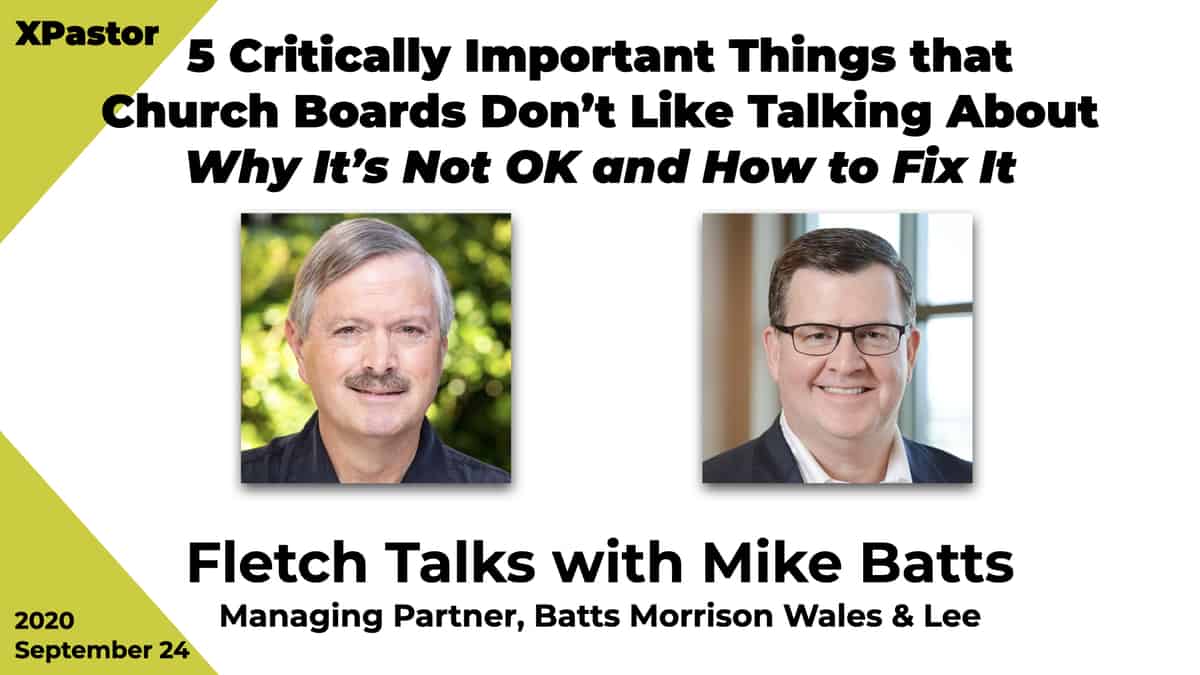Think about your church for a minute. How are decisions made? Not the little ones, like who’s going to watch the two-year-olds next weekend, but the big ones: should we start that new ministry, how do we allocate dwindling resources during a budget shortfall, does the new youth pastor come from within or do we hire outside? Who makes those decisions and how? What is the process for anything being decided around your church? Perhaps the following scenarios sound familiar:
- In order for a new initiative to launch, the senior pastor must give his approval.
- Ideas are generated by the senior leadership of the church, rather than from the grassroots.
- “We’ll take care of that.”
- “Here is how this ministry/small group/Bible study will look and function.”
- “We need to get our hands around the communication that is happening through social media.”
- “We don’t get to make those decisions.”
For a variety of reasons that this article will explore, Western Christian churches seem to be obsessed with a form of organizational structure and leadership that restricts power and authority to one person, or at most, a very small group of people. This is a centralized structure where decisions and directions come from “the center,” as opposed to the fringe, or grassroots, of the organization. But is there a scriptural foundation for this structure? Why is this so easily embraced? And are there alternate contemporary organizational structures available that can lead to greater church effectiveness?
How did we get here?
So when we talk about an organization that is either “centralized” or “decentralized,” what exactly do we mean? Surprisingly, the terms and concepts are not a modern phenomenon; they have been around for centuries. In fact, during the late 1800’s, Turkish-born Jules Henri Fayol said,
“Centralization is not a system of management good or bad of itself, capable of being adopted or discarded at the whim of managers or of circumstances; it is always present to a greater or less extent. The question of centralization or decentralization is a simple question of proportion; it is a matter of finding the optimum degree for the particular concern.”[1]
In other words, even at its earliest inception, it was widely understood that centralization and decentralization lay at extreme ends of a continuum with various shades of overlap in between. And organizations might land at various points on that spectrum, depending on circumstances and leadership. For the purpose of clarity for this article, centralization is an organizational structure where power, authority, and decisions are held and made by a core person or small group of people. Decentralization is an organizational structure where power, authority, and decisions are dispersed and made by empowered people throughout the organization. Both structures, given a particular time and place and context, can be important and even necessary.
From the very beginning of modern civilization, however, centralization and decentralization created more tension than stability. Aristotle said, “We should also know over which matters several local tribunals are to have jurisdiction, and [those] in which authority should be centralized; for example, should one person keep order in the market and another in some other place, or should the same person be responsible everywhere?”[2] In an attempt to alleviate this tension, the Catholic Church, by the third century AD, became a specialist in centralized authority and doctrine. Even though the Protestant movement reacted against centralization, the largest industries of the day in the New World—the military, the mills, and the railroads—were highly centralized organizations and this, in turn, still influenced the Western Protestant church. The result was that even though most denominations became decentralized and gave authority to the local church, the local church still operated in a highly centralized fashion. Sometimes scripture was even used to reinforce this perspective, though the New Testament presents both a centralized and decentralized organizational structure that was present in the early church.
For example, even though Paul’s first letter to Timothy is often used to set up a rigid church structure, the beginning of this letter establishes its true intent: “As I urged you when I went into Macedonia, stay there in Ephesus so that you may command certain people not to teach false doctrines any longer….”[3] Therefore, this letter was not designed to set up church order but to correctly deal with elders who had been lead astray by false teachers, or were false teachers themselves.[4] However, there are references in the letter to how the church was organized at that time. First Timothy 5:17 references a plurality of leaders that governed specific churches, implying that there were more than one person directing affairs. Since Christians assembled in house-churches (decentralized), this could simply be a reference to a leader (or elder) for each church, who collectively would be known as the elders of the overall church[5] (centralized). Hence, even in this one example, both structures are supported biblically. This is repeated throughout many of the Pauline letters.
Because of this, within the Protestant arm of the church, four main governing structures emerged:
- Episcopal: Highly structured and hierarchical where the bishop became the ultimate ruling authority over many churches.
- Presbyterian: A group of elders who led the local church with the ultimate ruling authority within the denomination.
- Congregational: The ultimate ruling authority taking place within the local congregation.
- Nongovernmental: No formal organizational structure.[6]
The reason these structures emerged is because the Bible does not make any sort of definitive conclusions about which structure should be used in all cultures and situations.[7] Oftentimes, those within a particular structure are convinced that their interpretation, however, is the “most Biblical.” In truth, each local church is free to organize themselves in a way that uniquely allows them to help their community and world find God.
If both organizational structures are seen in Scripture, then why do the scales seem to tip so heavily toward centralization in most of our contemporary churches?
First of all, the pastor that leads a local church is seen both as the supreme interpreter of scripture, as well as the supreme leadership authority, stepping into the role of a Paul, Timothy, or Titus.[8] That kind of power is difficult to resist. And from an organizational perspective, many churches typically stay away from change and innovation because these two qualities are often resisted by the most faithful members. Therefore, a structure like centralization is perfect because it lends itself to stability and control. If the senior leader determines that the congregation needs to pray and fast, then those plans will be followed, usually without a lot of questions. This can lead to high efficiency in the short term but if the church grows, then the one person who is in charge and able to make decisions can become less and less accessible, slowing down the decision-making process. The structure that helped foster growth suddenly becomes the structure that impedes growth.
Churches that favor centralization also tend to place a high value on doctrinal purity and truth. Therefore, the one person (or small group of people) who are seminary-trained and hold the highest degrees are the ones most qualified to dispense and guard the truth. This ensures that authority is held by the smallest number of people and that there are few teams empowered and equipped to make decisions. If these teams exist at all, they have the sole purpose of implementing what has already been decided.
In contrast, a decentralized organization tends to be very adaptable; has few rules and policies; uses many teams to lead, implement, innovate, and build; enjoys a relaxed hierarchy that has far fewer organizational levels; and in fact, pushes decision-making to the lowest levels.[9] Again, these factors can interfere with a church’s desire for doctrinal unity and control (“Everyone must adhere to the same beliefs or else they’re not a good fit here.”), and therefore, churches tend to unconsciously lean toward a more centralized structure.
But should the scales tip back more in favor of decentralization in many of our churches today? Would that be a healthier approach in helping today’s culture experience Christ? Are there contemporary examples that we can draw on to better understand the benefits of a decentralized organization?
Options for Organizational Structure
With the advent of the internet, which was created and lives as a decentralized entity, our culture has embraced a more decentralized perspective. Customers have more of a say in decisions that a business makes; viewers want to watch a TV program when and where they want and not when a network tells them to; individuals have more access to public figures like never before. Innovative companies and organizations are rejecting the organizational structures of the past in favor of faster, more efficient, less controlling, more adaptive styles that allow them to navigate our rapidly changing, high-touch culture better than ever.
For churches looking for a more decentralized approach to organizing themselves, two current organizations, one from the marketplace, one from the church sector, illustrate how this can work no matter their size or circumstances.
W. L. Gore Associates, Inc.
Since 1958, W.L. Gore has had a flat, decentralized structure that has helped it develop industry-leading products while growing to over 10,000 employees with offices in over 25 countries, producing approximately $3 billion in annual sales. Founder Bill Gore “built the company upon four core principles: 1) fairness; 2) freedom to encourage others to grow in knowledge, skill and responsibility; 3) ability to honor one’s own commitments; and 4) consultation with others before taking action that could affect the company “below the waterline.”[10] “We work hard at maximizing individual potential, maintaining an emphasis on product integrity and cultivating an environment where creativity can flourish. A fundamental belief in our people and their abilities continues to be the key to our success,”[11] says Terri Kelly, who became president and CEO in 2005 after being elected to that position by her co-workers. She says that this original philosophy still influences the company in four primary ways.
First, resist hierarchy.[12] Instead of a decision ladder, where requests have to work their way up and then back down, Gore tends to operate as a lattice where workers can go to anyone in the organization for assistance in helping them be successful. Rather than a fixed structure, they have “on-demand hierarchy,” which means that their formal hierarchy shifts fluidly depending on who is most knowledgeable about a particular project, goal, or need. This encourages employees to connect with each other within their network, and not just one or two people above or below them in the organizational structure.[13] If someone has an idea, instead of having their boss approve it, they go to their co-workers for approval, try to persuade them of the idea’s merits, and recruit them to help bring it to fruition. This allows strong ideas to emerge from all across the organization.[14]
Second, resist titles. Since there is little hierarchy, a title infers that there really is a hierarchy because it can put a person in a position of authority over another. Gore’s employees, called “associates,” don’t have bosses. Instead, they have “sponsors” who help them find their best fit and contribution within the organization.[15] They meet regularly together and it’s the sponsor’s job to help develop the associate, to challenge them to grow and to reach their fullest potential. This helps create a culture of trust within the individuals and maximizes the organization’s success.[16]
Third, trust people and give them freedom. W.L. Gore has an intrapreneuring program called, “Dabble Time Policy,” that allows associates to use 10% of their work to develop projects that they are passionate about and interested in.[17] The other 90% of their time is still devoted to what each associate has decided to work on (with their sponsor). Even still, the sponsor makes recommendations to the associate and it’s the associate’s final decision about what they want to pursue.[18] But once that commitment is made, there is high accountability, not just to a “boss,” but to everyone in the company. This sense of ownership and commitment is much more powerful when it is felt across the entire organization, instead of with just a few. The starting place must be, however, with a common agreement on foundational beliefs and values.[19]
Fourth, leaders lead because they have followers. Associates are not promoted based on longevity or through a process that comes from the top of the organizational structure. A person is qualified to lead based on others’ willingness to follow them.[20] This practice of “natural leadership” allows authentic leaders to work their way into positions with more and more influence. People gravitate to those they want to work with. Those that have an idea put a team together and try to convince others to make it possible.[21] This process allows for the organic and viral development of other leaders instead of forcing each person into a narrow and specific leadership development track. “It’s a process of giving away ownership of the idea to people who want to contribute and be a part of it. The project won’t go anywhere if you don’t let people run with it,” Kelly says.[22] This distributed leadership model can be chaotic, but that is why it is so important for there to be common beliefs and values from which common behavior can flow. This also distributes the responsibility to those associates who have the most knowledge and can best make the key decisions. Terry says, “Our leaders have to be comfortable with not being at the center of all the action, with not trying to drive every decision, with not being the most strategic person on the team or the one with the most thoughtful ideas. Their contribution is to help the organization scale and be effective.”[23]
New Life Community Church
While W.L. Gore embodies a decentralized approach for the individual, New Life Community Church in Chicago, Illinois, has embraced a decentralized approach for its overall organization. Since 1986 when the church began, New Life has impacted downtown Chicago, moving to various locations as their weekly worship attendance continued to grow. In 1996, after much prayer and fasting from the pastors and members, they asked God to let them reach 1% of Chicago’s population. The only way they knew of being able to reach 30,000 people would be in becoming “one church in multiple locations.” A year later, they launched their second campus and since then, through “restarting” many dying congregations, they have over 20 campuses, numerous worship gatherings, and over 7,000 people attending weekly. Primarily, there are two factors that set this congregation apart from a typical centralized church.[24]
First, distributed worship gatherings. As stated above, New Life has 20 campuses and many worship gatherings. All of them are led by a campus pastor and have live worship bands, most have live teaching, with a few having the teaching on video. Each campus has its own unique identity and approach to ministering to the neighborhood surrounding the church. Even though the number of people involved in each campus is considerably less than the number that might gather at a centralized campus, the people are able to know each other better and build closer relationships. There are also more places for individuals to get involved and make a difference. Instead of one or two very high quality worship teams at a centralized campus, there are now multiple numbers of worship teams for all of the campuses that people can get involved in. Each campus works hard at contextualizing God’s message of hope to the unique group of people each campus is trying to reach. There are only a few “central” church initiatives or ministries (like finances and administration), though each campus has the freedom to voluntarily partner with another campus for initiatives or ministries that both can benefit from. In addition to the many campuses and worship gatherings, the campus pastors gather for several hours each week to craft the message to their respective campuses together. Once the overall theme and outline have been agreed upon, then each pastor will tailor his individual message to his specific audience.[25] This is a picture of centralization and decentralization working together in perfect harmony.
Secondly, distributed leadership. Even though Mark Jobe is the lead pastor, he prefers to be known as simply one of the teaching pastors.[26] He defers leadership to those around him, instead of embracing a more hierarchical and centralized view. This is further modeled with each campus having their own team of elders. And then the entire church, including their not-for-profit, New Life Centers of Chicagoland, has a board of directors that help lead the business end of the entire organization.[27] Once again, New Life manages to maintain their core with a centered leadership team, while distributing innovation and decision-making to those most qualified: the pastors and leaders on the front lines who are actually ministering to the community.
Both W.L. Gore and New Life Community Church are contemporary examples from the for-profit and not-for-profit world of organizations that have focused on becoming more and more decentralized in order to be increasingly effective in today’s culture. Gore started out that way; New Life transitioned after ten years of ministry. However, both are doing more in a decentralized fashion than what they could ever do through a typical centralized structure.
But how do these organizations apply to a church looking to become more decentralized? What lessons can be learned from their journeys that can serve as guideposts along the way for a church wanting to adopt a more decentralized organizational structure? Below we will look at six lessons that can help a church move faster, become more adaptive, increase efficiency, and be less controlling.
Making the Change
What if a church wanted to change from being centralized to being decentralized? How would this church, no matter its size, begin moving from a model where authority and decision-making are held by a few to a model where more and more people are empowered to make decisions for the good of everyone? How would this happen?
Let’s be honest: The goal is not in transforming a church to be 100% decentralized. That would, no doubt, be both unhealthy, as well as impossible. Rather, the goal is to distribute power, authority, and decision-making so that more and more people are able to become all that God has created them to be. If more people were given ownership and able to help advance God’s Kingdom, then His Church would be more vibrant, passionate, and life-changing. The following six lessons can help move a church down the path to becoming more decentralized. They can also be applied in various ways, depending on a variety of factors, such as size and age of church, present leadership model, and how quickly the church congregation can adapt to change.
- Resist hierarchy. For a church, this can be one of the most difficult lessons to apply. But instead of holding to rigid forms that can sometimes impede progress, communication, and new ideas, ad hoc teams can often be formed around a project or short-term goal. This can help move people away from any natural barriers that are created by separate departments or ministry areas. Begin forming new teams based on people’s knowledge and contribution, rather than longevity or seniority. This can also empower more people on the outskirts of the staff team who might have good ideas, but under the present model, not have any means to bring them to fruition.
- Resist titles. Downplay the name someone is given for what they do. If their responsibilities regularly change, they will have difficulty in latching onto only one title. But a title does give people a sense of where and how they fit into an organization, just like a family’s name gives a child a sense of meaning and purpose. That can be healthy. But an over-reliance on a title can become unhealthy and obsessive. Consider having general titles, such as Team Leader or Adult Team Member. Or simply give out new titles on a regular basis; eventually, since the titles change so often, people will stop putting so much significance on them. Remember, if a person is a leader only because of a title, they are not a true leader.
- Trust people and give them freedom. Give people responsibility and hold them accountable to what they say they are going to do. Churches will often do one or the other, to the detriment of the person involved. Either they will give them responsibility and not hold them accountable, or not give them responsibility and hold them accountable to something unrealistic. Empowering others “is power sharing, the delegation of power or authority to subordinates in an organization.”[28] So even if that means that something does not get done properly or in the timeframe established, let it happen. More leadership development can happen when something goes wrong than when it goes right. Use this as a coaching opportunity to encourage them on how to build their leadership skills.
- Leaders lead because they have followers. A church needs leaders who lead based on influence, not hierarchy or titles. Whether formal or informal, determine how those leaders are found, developed, and released to make an impact. Consider challenging and testing potential leaders to find others who might join them on an innovative project or initiative. Provide avenues that leverage authentic leadership and downplays positional leadership.
- Distribute worship gatherings. Instead of one very large corporate worship gathering, churches might consider launching additional sites that can be led by campus pastors who provide the teaching, or else the teaching is seen on video. Each site could have a different look, feel, or worship style. They could even be micro-churches that meet in homes. Not everyone in a city will come to a specific church, but if there are more options for worship in the locations that people already gather—whether homes, bars, schools, theatres, etc.—more people might find God.
- Distribute leadership. Provide more opportunities for high capacity people to lead in high capacity ways. It is far too easy to only think of high capacity leaders as those who are in full-time ministry or on staff. However, there are many high capacity business leaders who would love to see their marketplace skills to make a Kingdom impact for God. Ensure that there are positions available for those men and women. Craft high capacity job descriptions that only require 5-10 hours a week to accomplish. Invite them into conversations and give them authority.
Churches have historically been very centralized in their approach to organization, primarily because it helps keep control, authority, and decision-making to stay in the hands of a few people. This also prevents churches from adapting quickly to cultural changes going on around them. An alternative approach is to move more in the direction of a decentralized style. This is not to say that all churches should move from being centralized to decentralized. Rather, the decentralized sweet spot is the point along the centralized-decentralized continuum that helps the church reach its maximum potential. This is what every church needs to be asking: What areas/ministries/projects/people need to be centralized in order to best advance God’s Kingdom, and what areas/ministries/projects/people need to be decentralized in order to best advance God’s Kingdom? This is up to each individual and local church to determine. “The degree of centralization must vary according to different cases. The objective to pursue is the optimum utilization of all faculties of the personnel.”[29] This will require hard work, trust in people, secure leadership, and the conviction that God calls everyone—not just the few—to become all that He created them to be.
_____________
[1] Fayol, Henri, trans. Storrs, Constance (1949), General and Industrial Management. Sir Isaac Pitman and Sons, London. p. 33.
[2] Aristotle, trans. Jowett, Benjamin (1952), Politics, Great Books of the Western World, vol. 9. Encyclopaedia Britannica, Inc., Chicago, IL. p. 474.
[3] 1 Timothy 1:3
[4] Fee, G. D. (1985), Reflections on church order in the Pastoral Epistles, with further reflection on the hermeneutics of ad hoc documents. Journal of the Evangelical Theological Society. 28(2), pp. 141-151.
[5] Fee, (1985).
[6] White, Gary, (2010), Research Paper on Church Government and Elders, Heritage Fellowship Church, http://www.hfchurch.net/resources2010.html
[7] Holmes, Robert, (2001), A Survey of Apostolic Church Government, Cephas Ministry Library, Storm-Harvest Ministries.
[8] Fee, (1985), p. 149.
[9] Daft, Richard (2010), Organization Theory and Design. South-Western Centage Learning, Mason, OH, p. 93.
[10] Kiger, Patrick, (2006), Small Groups, Big Ideas. Workforce Management (Feb.), pp. 1, 22-27.
[11] Kiger, (2006).
[12] Hamel, Gary (2010), W.L. Gore: Lessons from a Management Revolutionary. Retrieved from http://blogs.wsj.com/management/2010/03/18/wl-gore-lessons-from-a-management-revolutionary/
[13] Kelly, Terri (2010), Interview with Jim Mellado, The Global Leadership Summit, August 5-6.
[14] Kiger, (2006).
[15] Kiger, (2006).
[16] Kelly, (2010).
[17] Haller, Howard, (2009), Intrapreneurship Success – Case Study – WL Gore Associates, Inc (Makers of Gore-Tex Rain Gear). Retrieved from http://ezinearticles.com/?Intrapreneurship-Success—Case-Study—WL-Gore-Associates,-Inc-(Makers-of-Gore-Tex-Rain-Gear)&id=2708900
[18] Kiger, (2006).
[19] Kelly, (2010).
[20] Kelly, (2010).
[21] Smith, Barker, (n.d.), Leadership Mythology. Retrieved from http://www.businessknowhow.com/growth/mythology.htm
[22] Kaplan, Michael, (1997), You Have No Boss. Fast Company (11). Retrieved from http://www.fastcompany.com/magazine/11/noboss.html
[23] Hamel (2010).
[24] Retrieved from http://www.newlifechicago.mobi/Main/about.aspx
[25] Lowery, Brian, (2008), Sharing the Driver’s Seat. Leadership Journal. Retrieved from http://www.newlifechicago.mobi/News-articles/Leadership_2008.pdf
[26] Lowery, (2008).
[27] Multisite Exposed Conference, (2008), New Life Community Church, Chicago, IL.
[28] Daft, Richard, (2010), Organization Theory and Design. South-Western Centage Learning, Mason, OH, p. 503.
[29] Wren, D. & Bedeian, A., (2009), The Evolution of Management Thought. John Wiley & Sons, p. 219.











